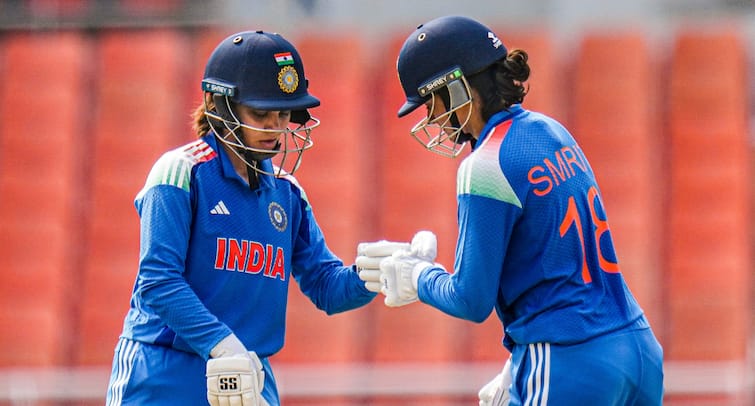Last Updated:
The NCRB reports higher fatalities for two-wheelers, cars/taxis/vans, autos, buses, and trucks while MoRTH reports higher fatalities for pedestrians and bicycles

In 2022, there were 4.46 lakh accidents and 1.71 lakh deaths as per NCRB and 4.61 lakh accidents and 1.68 lakh deaths as per MoRTH.
For years, the Ministry of Road Transport and Highways (MoRTH) and the National Crime Records Bureau (NCRB) have reported different numbers on road accident deaths. In 2023, the gap narrowed to its lowest in recent years, with NCRB reporting 936 more deaths. However, in terms of road user categories, the difference is sharp.
According to NCRB’s latest Accidental Deaths and Suicides in India 2023 report, released on Monday, the country registered 4.64 lakh road accidents and 1.73 lakh fatalities. MoRTH’s annual Road Accidents in India 2023 report, released in August, put the figures at 4.80 lakh accidents and 1.72 lakh deaths.
Recommended Stories
In 2022, there were 4.46 lakh accidents and 1.71 lakh deaths as per NCRB and 4.61 lakh accidents and 1.68 lakh deaths as per MoRTH.
While the difference in total road accidents continues to be huge—16,554 for 2023—the difference in death data has improved—from 5,182 in 2020 to 2,609 in 2022 and 936 in 2023. In 2023, in 18 states/UTs, the two agencies reported identical numbers, analysis by News18 shows.
The road ministry said the data provided in the report are sourced from the police departments of states and Union Territories collected on calendar year basis in standardised formats as provided by the United Nations Economic and Social Commission for Asia and the Pacific under the Asia Pacific Road Accident Database project.
The NCRB, meanwhile, said the information given in its report was obtained from states/UTs police, and it has only compiled and collated the data and presented it in the form of a report.
A deeper look by mode of transport—whether two-wheelers, cars, or pedestrians—reveals persistent discrepancies that highlight challenges in data collection and classification. There were 35,221 pedestrian deaths in 2023 as per MoRTH while NCRB said 27,586 pedestrians were killed in 2023—a difference of 7,635.
The difference in death of truck occupants varies between 10,066 under MoRTH and 13,823 under NCRB—a difference of 3,757.
The NCRB reports higher fatalities for two-wheelers, cars/taxis/vans, autos, buses, and trucks while MoRTH reports higher fatalities for pedestrians and bicycles.
State-Wise Difference
Of the 936 additional deaths reported in NCRB in the remaining 18 states/UTs, Haryana reported the widest gap of 433—5,401 deaths in NCRB versus 4,968 in MoRTH. Uttar Pradesh, Madhya Pradesh, and Rajasthan also showed significant variations.
The other states that showed a difference in the data—with higher deaths in NCRB—were Madhya Pradesh (300 excess deaths in NCRB); Uttar Pradesh (295 excess deaths in NCRB); and Rajasthan (170 excess deaths in NCRB).
The difference in Punjab and Maharashtra was less than 70 deaths, while for Sikkim, Dadra & Nagar Haveli and Daman & Diu, Jammu & Kashmir, Andaman & Nicobar Islands, Goa and Karnataka it was less than 10.
Odisha, Himachal Pradesh, Arunachal Pradesh reported more deaths in MoRTH data but the difference was less than 10 fatalities. In Mizoram and Nagaland, it was less than 50. The highest gap was reported from West Bengal among states where MoRTH reported more deaths—6,027 deaths in MoRTH and 5,703 in NCRB.
In 2023, when the numbers were released for the year 2022, News18 had reported that the government has created an online portal that will collect data on road accidents and deaths across the country.
The electronic Detailed Accident Report (e-DAR) Project was launched to establish a central repository for reporting, management and analysis of road accident data across the country.
Speaking to News18, a ministry official assured that with the rollout of the e-DAR portal, data for 2024 is expected to show better alignment.
While these numbers may look insignificant in terms of overall deaths, these gaps matter for policy focus, underscoring challenges in data collection, classification, and possibly in accident investigation or reporting standards. Without reliable data, India risks misdirecting resources in its fight to cut road deaths.
About the Author

Nivedita Singh is a data journalist and covers the Election Commission, Indian Railways and Ministry of Road Transport and Highways. She has nearly seven years of experience in the news media. She tweets @nived…Read More
Nivedita Singh is a data journalist and covers the Election Commission, Indian Railways and Ministry of Road Transport and Highways. She has nearly seven years of experience in the news media. She tweets @nived… Read More
September 30, 2025, 13:07 IST
Loading comments…
Read More






